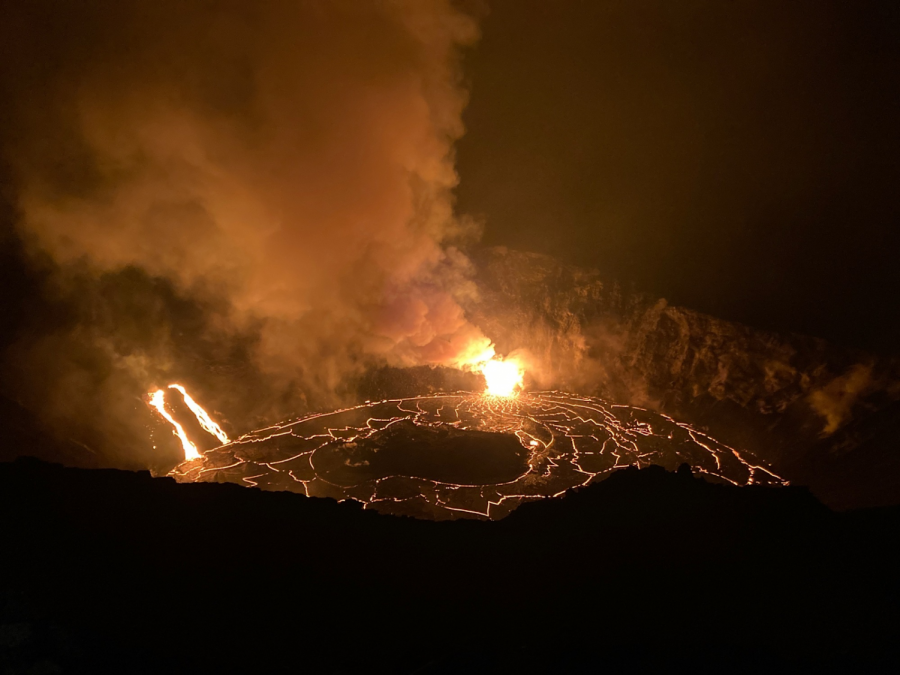Kilauea and Other Volcanoes Along the Ring of Fire Erupts
Kilauea’s crater is filled with molten magma.
February 25, 2021
The Kilauea Volcano has once again started to show signs of erupting again at the beginning of this new year. On Dec. 20, 2020, the Kilauea crater once filled with a deep water pool had been swallowed up by a rising pool of magma that has a depth of 500 feet. Since then the lava pool has only grown deeper and deeper with many fissures opening up around the crater known as Halemaʻumaʻu. Kilauea is an active volcano that exists on the Big Island of Hawaii and for the past two thousand years it has been constantly pouring out molten rock and steam as well as explosive eruptions. As a result of a few small-magnitude earthquakes, lava has poured into the volcano and from the looks of it, it won’t be slowing down anytime soon.
Even if Kilauea were to have a massive eruption it would barely affect Oahu and the worst we could ever see is ashfall. The eruption has affected the inhabitants of those who live close to Kilauea whenever it erupts like this. In 2018, its eruption then was the strongest seen in over two hundred years and it caused fissures to erupt all over the island and it completely destroyed the Lelani Estates region. As well as magnitude 4.0-5 earthquakes could be felt as the volcano pumped ash and fiery rock into the sky.
Though Kilauea is erupting, it’s not alone in its acts. All around the ring of fire, volcanoes are erupting causing a chain reaction. Volcanoes in Italy, Russia, The Caribbean, Japan, and South America have been erupting because of the shifting tectonic plates. Over 20 volcanoes around the world are erupting with some being very light and others having powerful explosions. Mount Etna in Italy is dumping lava down the side of the mountain with massive clouds of ash and burning rock pummeling out of its crater. These eruptions have also come with earthquakes rocking the ring of fire. On Jan. 15, a 6.2 magnitude shook one of the islands in Indonesia. As these events continue, scientists will be able to explain what truly has been going on with the planet this year.
Kilauea has had a massive history with its eruptions and constant volcanic activity for thousands of years. Effusive lava flows were the norm until about 2,200 years ago when the powers caldera formed the precursor to the present-day summit caldera. Sometime between 850 and 950 C.E., the most powerful explosive eruption known to have occurred from Kilauea sent rocks weighing 4.4 kg at least 5 km from the summit. Golf ball-sized rocks fell at the coast, 18 km away. Towering lava fountains, likely more than 600 m high, roared from Kīlauea caldera just after it formed and began 300 years of explosive eruptions that ended in the early 19th century. During that time, at least four strong explosive eruptions sent high into the jet stream, with ash falling over a broad area east and offshore of the volcano. Having pieced together the recent geologic past of Kilauea, scientists conclude that the volcano will eventually return to a long period of mostly explosive activity, just as it did around 1500 C.E.


